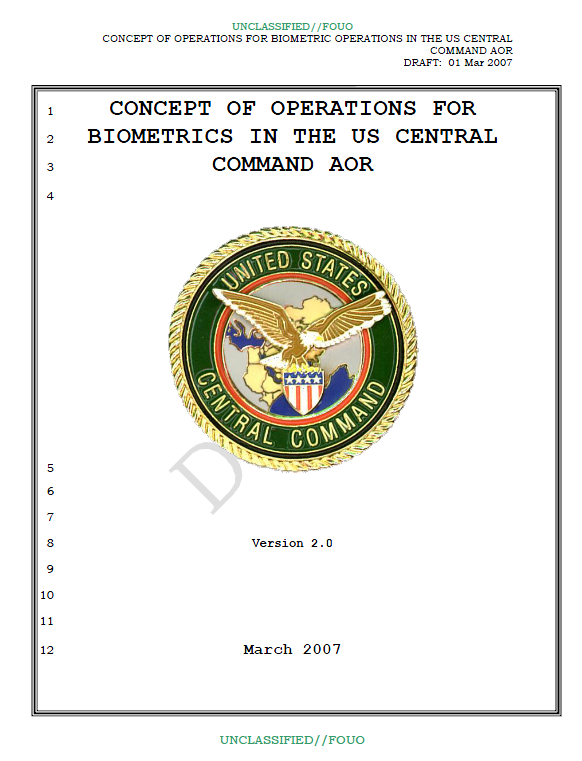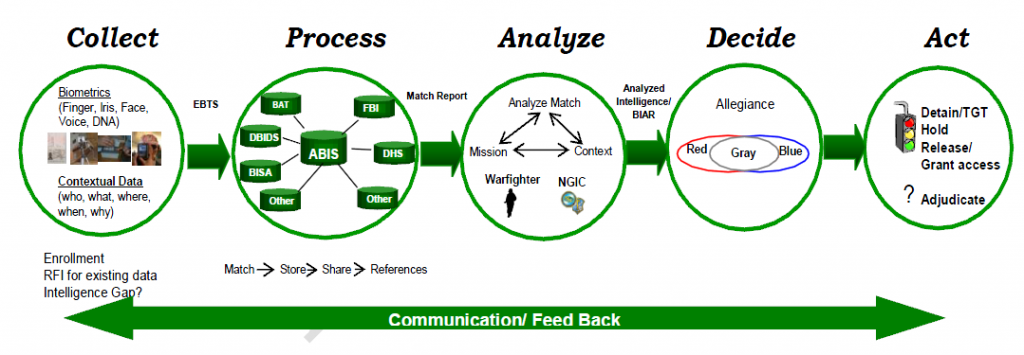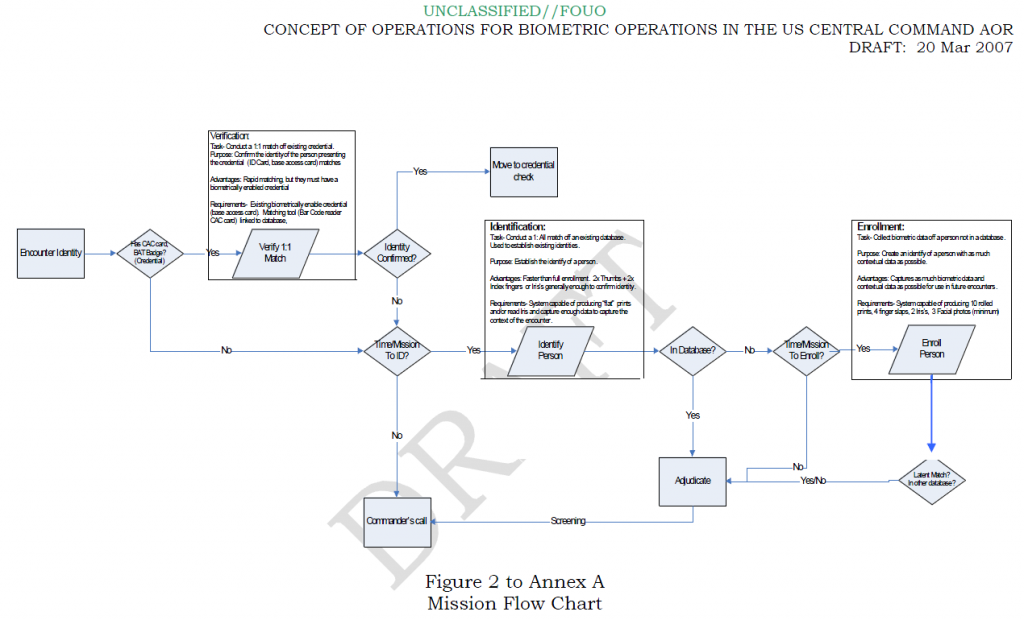 U.S. Central Command
U.S. Central Command
- 53 pages
- For Official Use Only
- March 2007
1. (U) Purpose. This Concept of Operations (CONOP) documents concepts and procedures for the use of biometric technologies to support identity superiority, protection and management in the entire USCENTCOM AOR. This CONOP focuses on the biometrics process and key systemic enablers. This CONOP contains UNCLASSIFIED and CLASSIFIED 100 annexes. The body of the CONOP is UNCLASSIFIED however, Annex E, “HUMINT Biometrics Management”, is CLASSIFIED SECRET//NOFORN.
…
4.3 (U) Biometrics is means of identification that provides great confidence in the relationship between an identity and an individual. The associated history of a biometric identity can assist in the categorization of individuals as“Red,” “Blue,” or “Gray.” When properly collected and matched, biometrics routinely identifies an individual with a degree of certainty of over 99%. Unlike signatures or “flash to pass” ID cards, biometric samples cannot easily be faked. Unlike simple facial photos that change over time, a biometric proves more stable over time and cannot be easily duped through disguising.
(U) Biometrics is a force multiplier. By linking an individual to a history, a Commander has facts on which to base a decision. Biometric modalities provide faster screening while ensuring threatening personnel are identified. Because an individual‟s biometric modalities are not easily “spoofed” or transferable to another individual, a biometrics reader in lieu of a „flash to pass‟ badge system is required. This type of verification allows the Commander to focus his forces on missions rather than determining the authenticity of credentials.
4.5. (U) Biometrics is also the only form of identification which, by its nature, is also evidence. By properly enrolling a person, a Commander can compare the match to previously collected data such as latent prints, previous detainments, and „watch lists.‟ A Commander can match an enrollment for base access or weapon card applicant against a historical latent print and use that history to deny access, and prosecute suspect individuals. Alternatively, biometrics systems can be used to exonerate innocent individuals by establishing irrefutable evidence of time/location combinations that can be accessed after the fact.
5. (U) THE USCENTCOM Joint Biometrics Process
5.1. (U) The purpose of the USCENTCOM biometrics process is to enable the Commander to effectively categorize an individual as friend or adversary. With biometrics, the Commander can match an individual to historical data in order to confirm that person is who they claim to be and possibly determine past activity.
…


